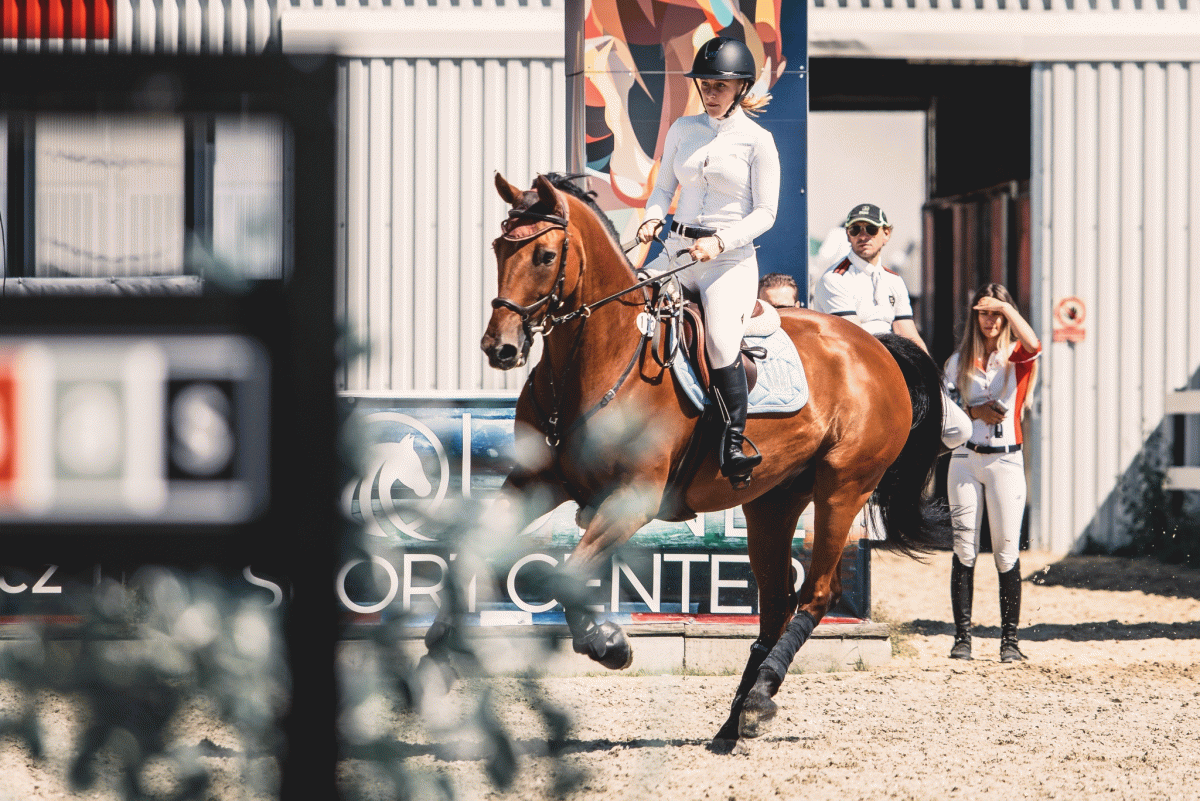
Since last autumn, EQUIMO has become my riding companion, and I always put it on, even if I go on a hack. It's no different with shows; I naturally pack my EQUIMO in my tack box. Today, I would like to introduce you to my showing day with this little helper.
My horse Valentino never overflows with energy, and therefore I need to be careful with the amount of workload prior to a show. I usually go riding the day before, but nothing too hard. Just a short session where the goal is to let him relax under saddle, flex him and let him engage his hind limbs while making transitions and extending trot and canter. All this happens in about fifteen minutes because I am usually cautious not to tire him. The analysis I went through afterward assured me of reaching my point when it came to the length of the training, and I also compared my tempo in canter with my feelings. For me, rhythm is one of the essential things while jumping, and I like to compare my feelings in the canter with real data. I believe it leads me to understand and better evaluate the tempo when I am riding a course.
Our show day usually starts at 7 am when I go to the stable to feed Vali and muck out his box. His meals are already pretty big at home; I give him oats in addition to granules. At a competition, I need to consider the extra energy he burns. My EQUIMO analyses have shown me that he burns approximately two times more calories during one round at a show than he does during a flatwork, and roughly halfway more than during jumping training. My feeding plan needs to be adjusted according to these facts because if I do not supplement him with enough feed, he will start losing weight during the season.
Our classes rarely start before noon, so we have some time for ourselves after the morning stable duties. Valentino spends it sleeping or watching the rush in the stables, whereas I like to pick up a book and do stretching. Because I want to be ready on time, I start tacking up in advance. My routine is to get into the saddle when there are twenty horses to go before me. When there are ten horses to go, I start to jump. This routine does not give me much extra time, just enough for Vali to warm up. Sometimes I get too excited, and I need to remind myself I should trot more before I begin to canter. The live analysis on my smartwatch helped me at this stage. I had a basic overview of my warm-up and could be 100% sure I had not missed anything. With that in mind, I could go on to jumping.
I like to go back to the ring in my head after I get off my horse. I am keen on watching a video, thinking back on what I have done, and using every piece of retrospection I can get. I believe that taking lessons from your mistakes is a crucial point in learning. If something goes well and we give a good performance, I still go back and think about why it went well to reproduce those reasons later. My EQUIMO analysis was a great way to do that. First, I looked at my pace. I saw how it changed and tried to connect it in my mind with the precise moments in the course. (Knowing the proper tempo is about 110 strides per meter, I ideally aim for an even round at this pace.) I studied all the distances I had jumped earlier. I took a look at the strides and saw if they were even. Last but not least, I paid attention to the time I spent cooling my horse down after a ride. Warm-up rings are usually packed, and I may happen not to cool Vali down properly to get out of there. With a quick look at my analysis, I was sure I cooled Valentino's muscles well enough to avoid soreness.
I think EQUIMO gave me a great opportunity to look at my show day a little differently and more thoroughly. Of course, it could not substitute a real trainer, but I could learn a lot from my analysis, and I am surely looking forward to getting to know my rides even better in the future.